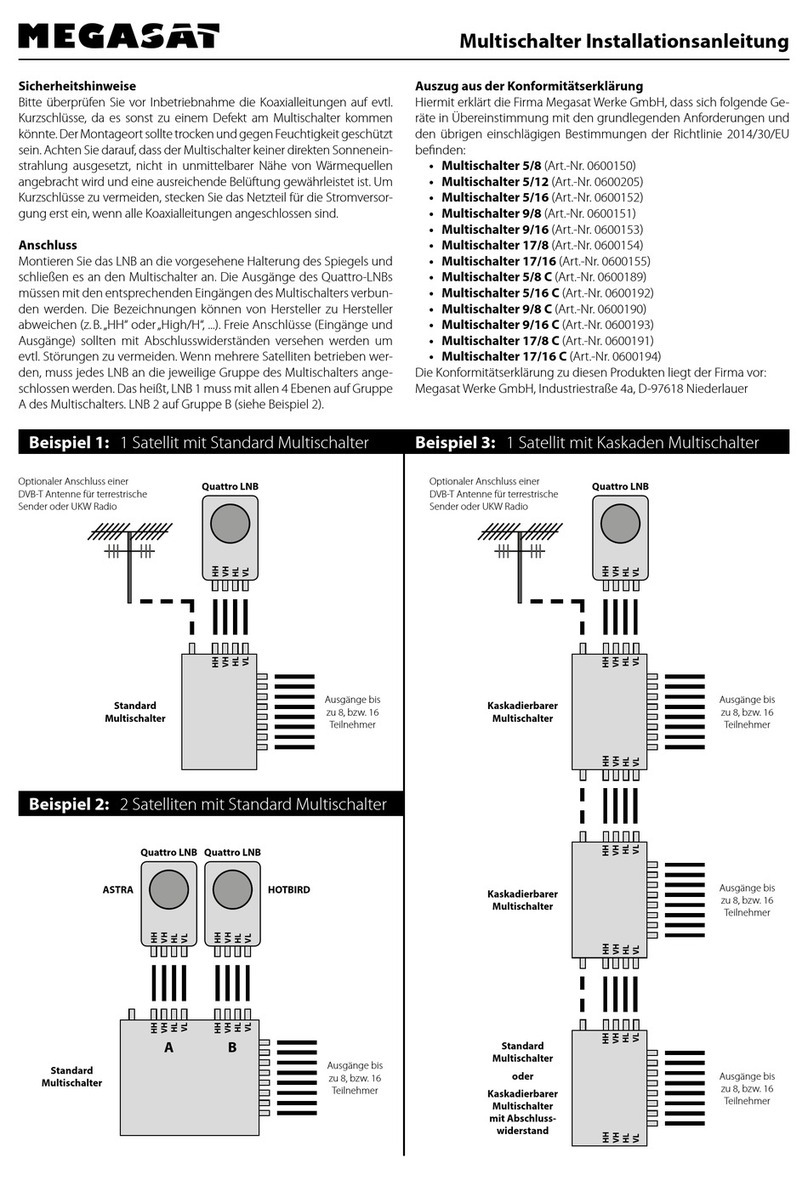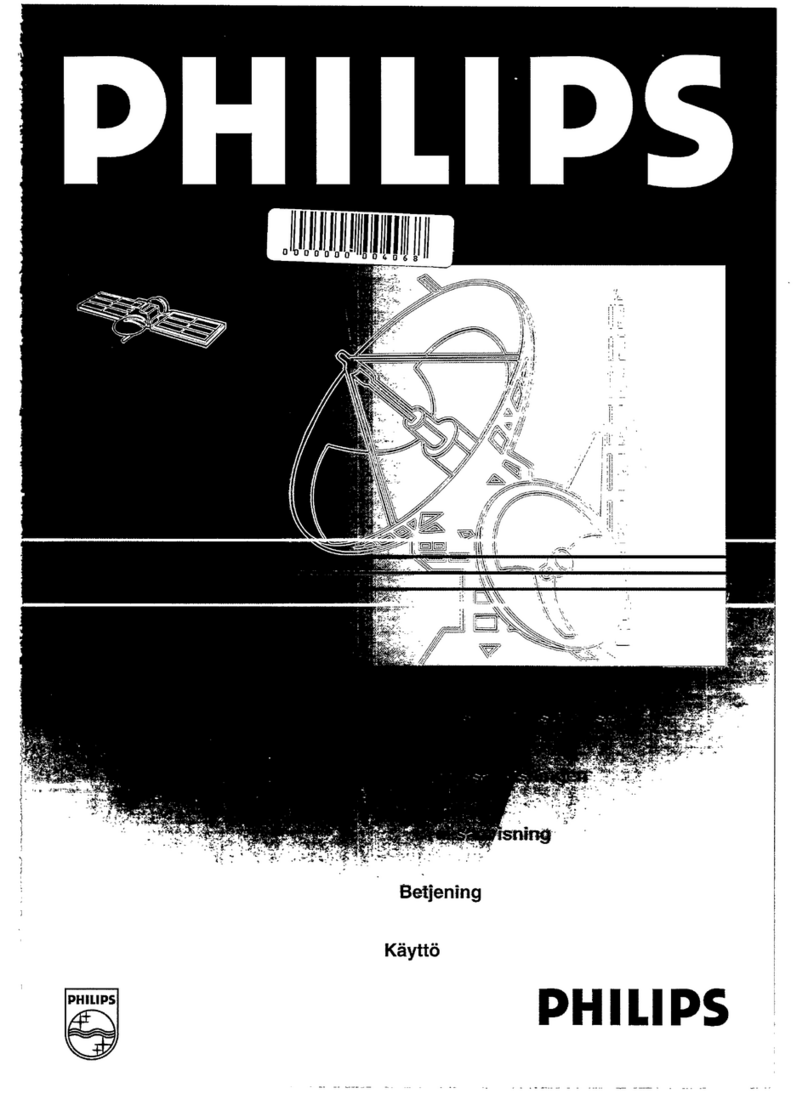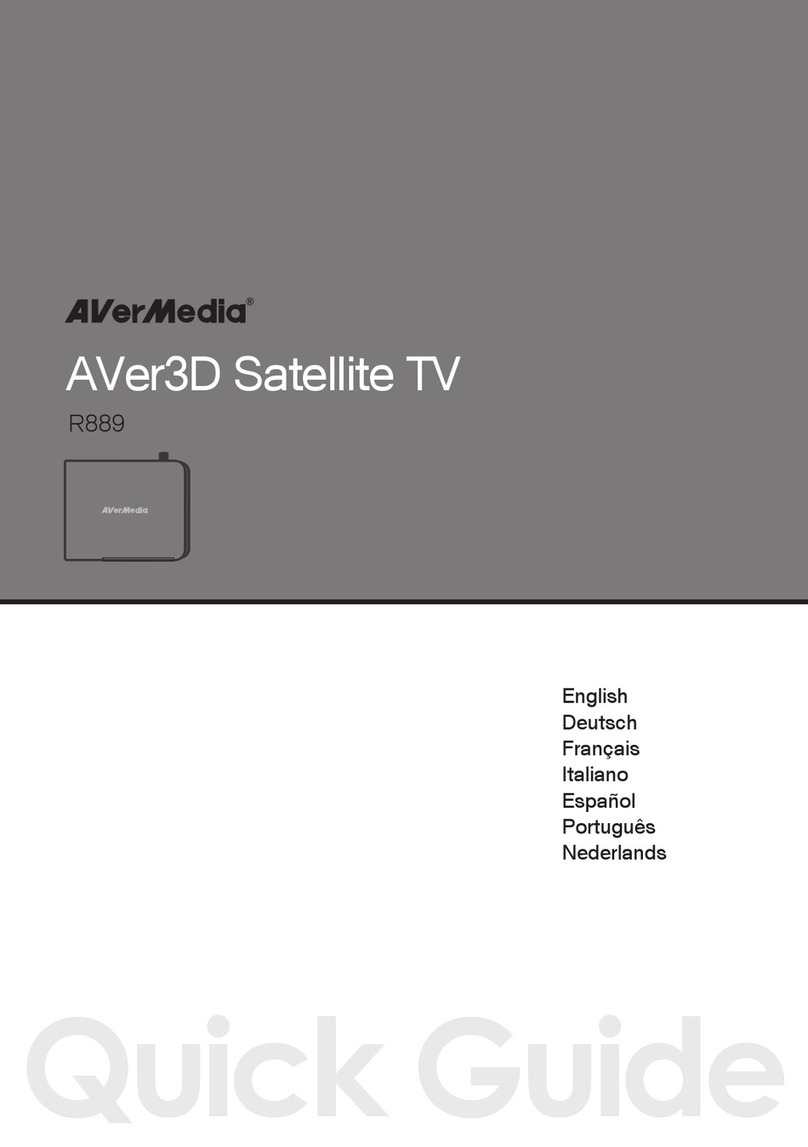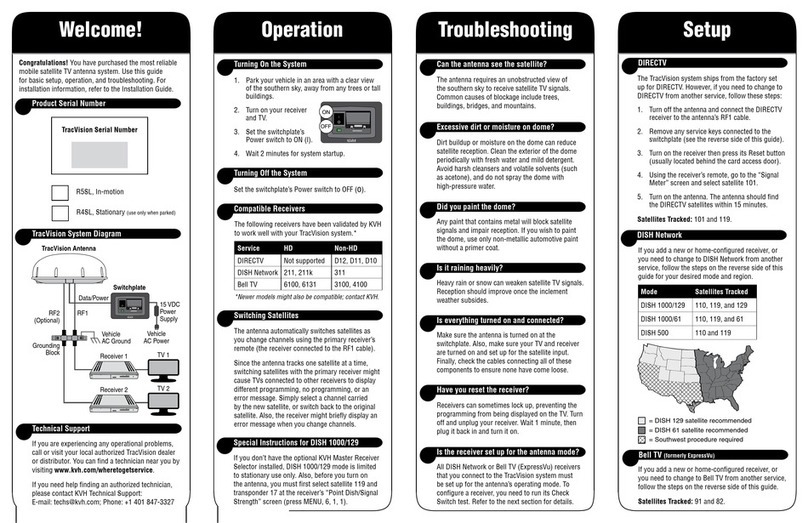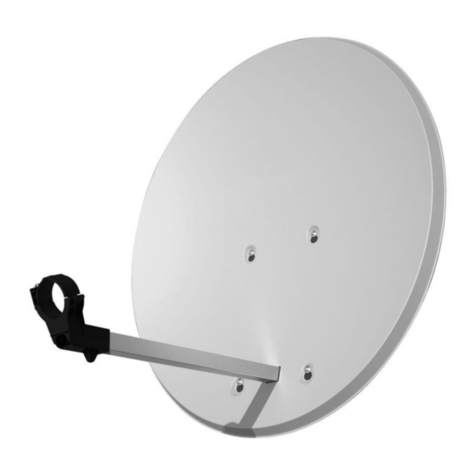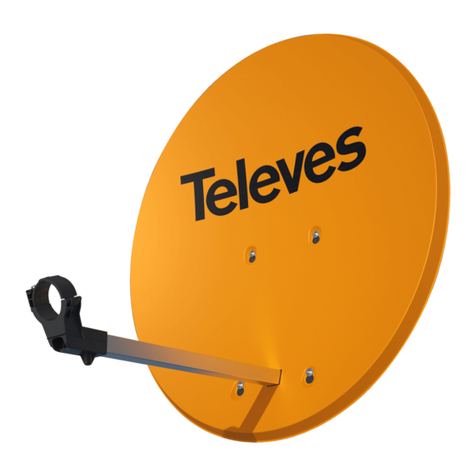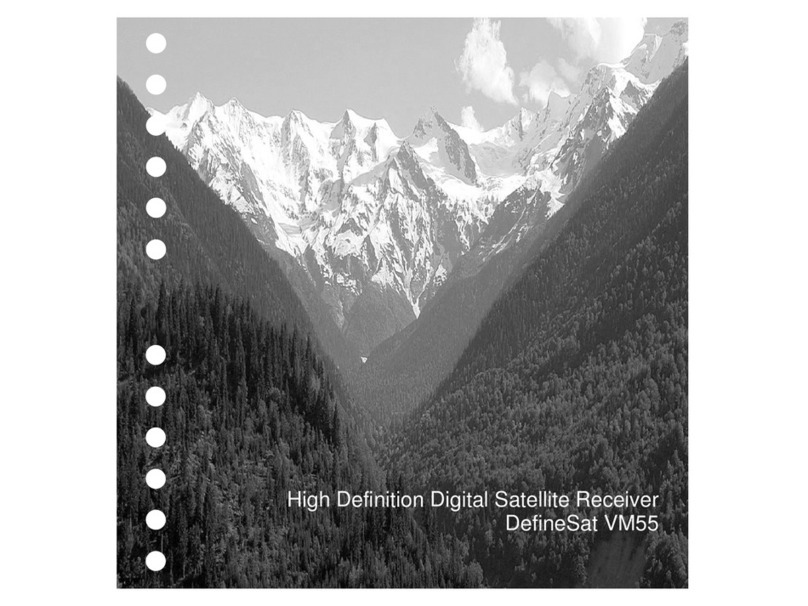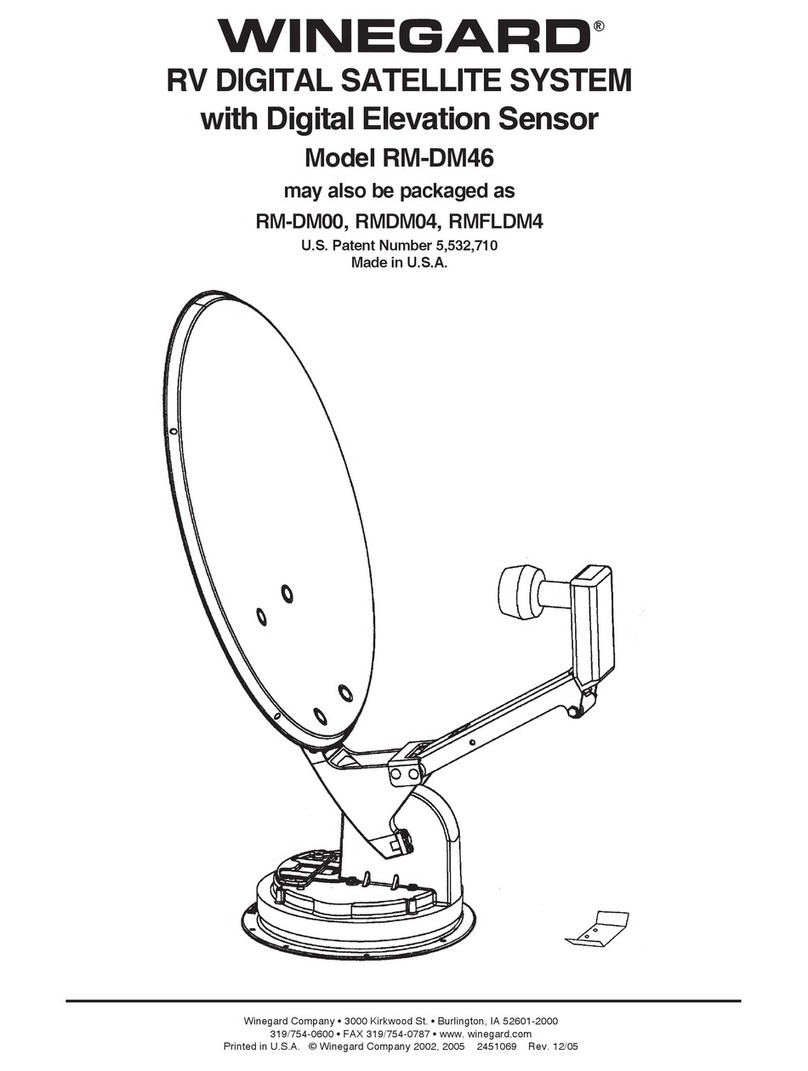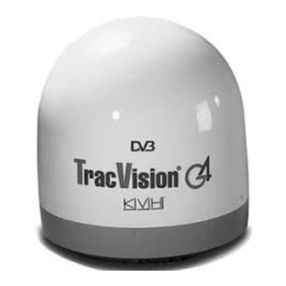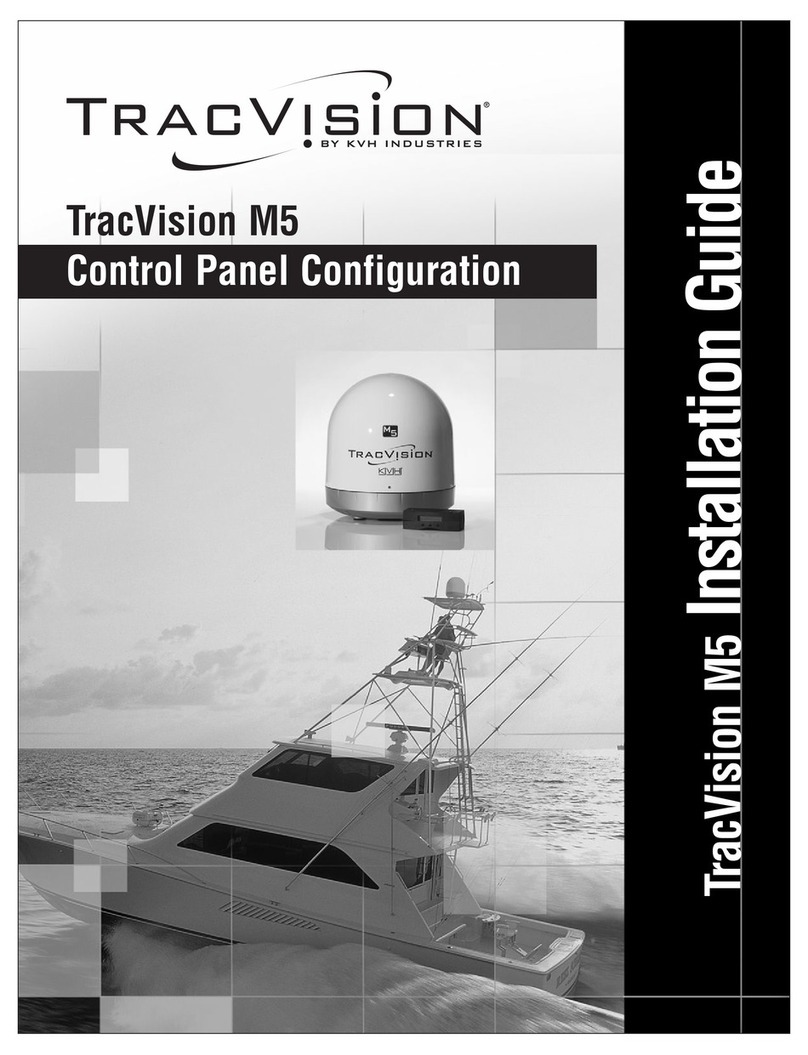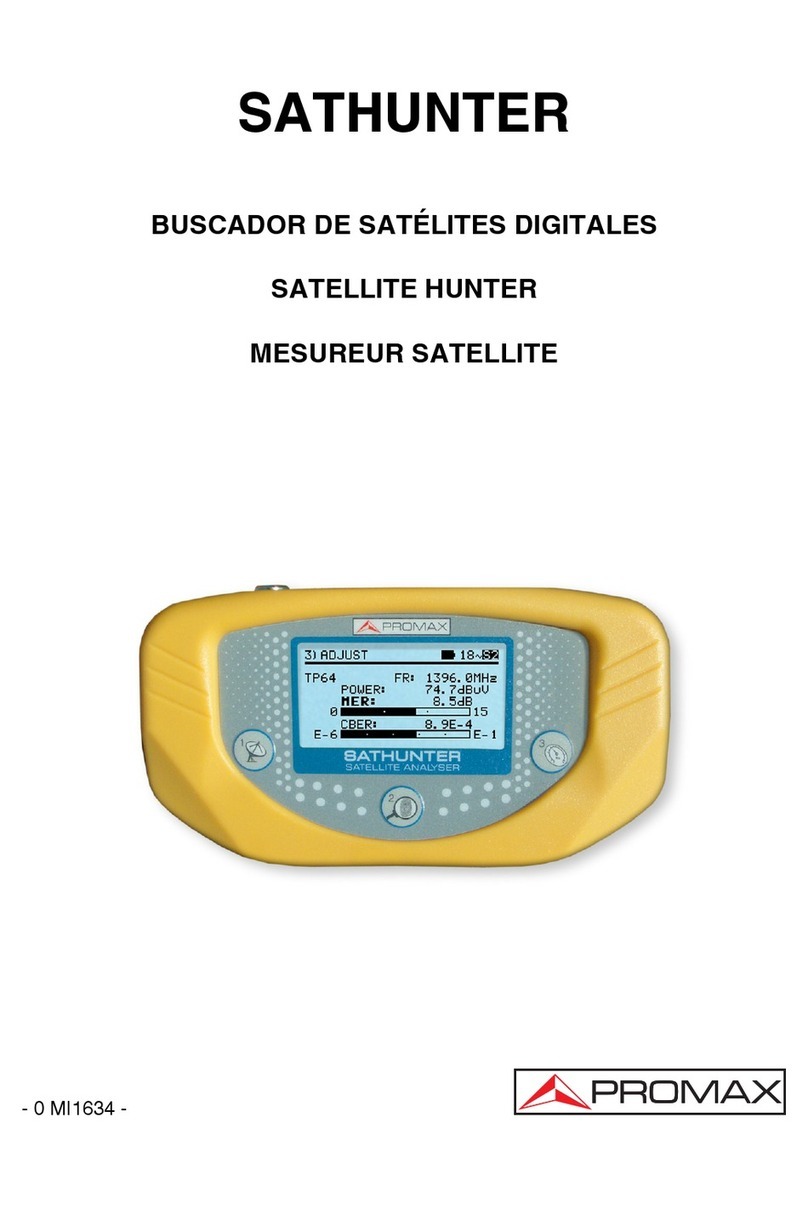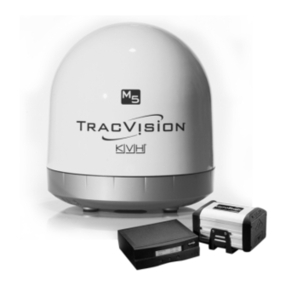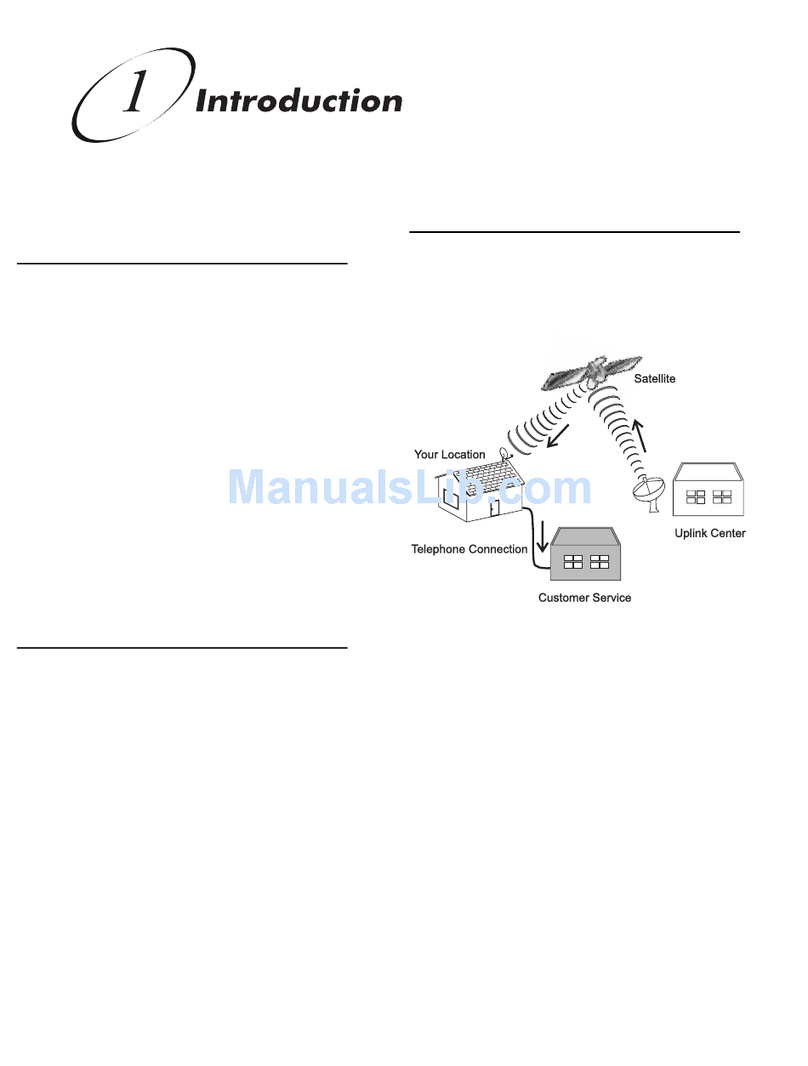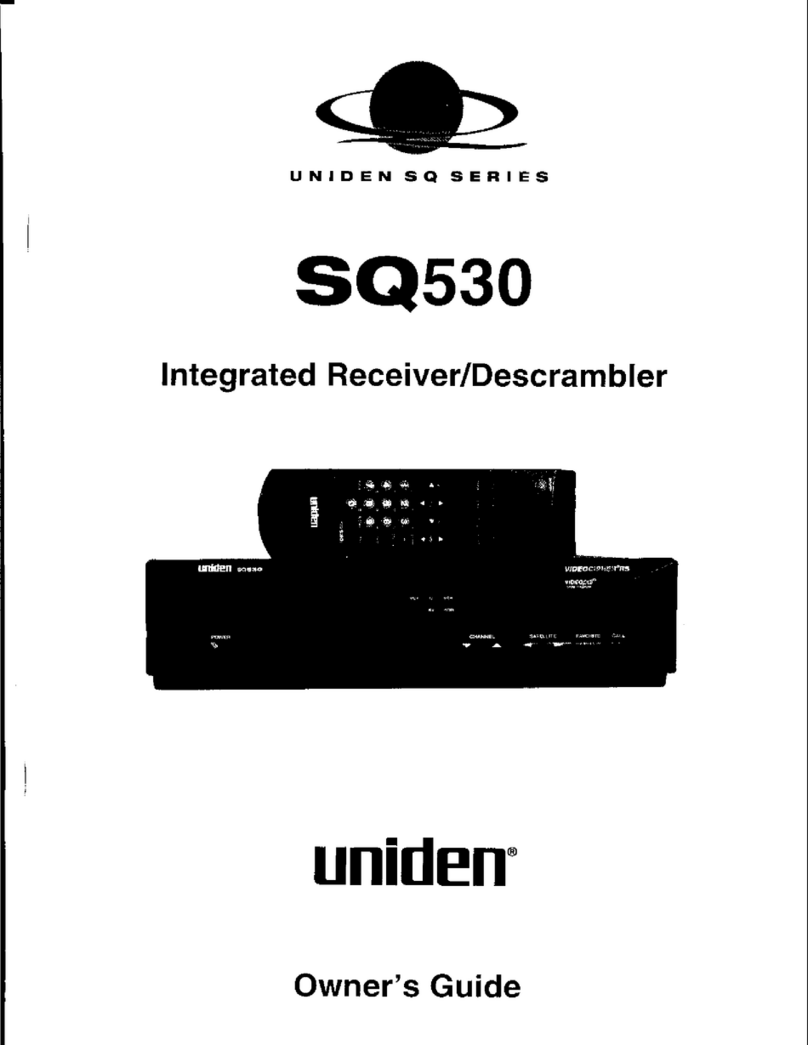EN
5
Satellite
Demodulator
Input frequency 950 - 2150 MHz Through loss < 1,5 dB typ.
Symbol rate 10-30 Mbaud (QPSK- 8PSK) Modulation DVB-S2 (QPSK, 8PSK)
DVB-S (QPSK)
Frequency steps 1 MHz Internal FEC LDPC (9/10, 8/9, 5/6, 4/5, 3/4, 2/3, 3/5,
1/2, 1/4, 1/3, 2/5)
Input connectors
and output “F” female External FEC BCH (Bose-Chaudhuri-Hocquenghem)
Input impedance 75 ohm. Roll-o factor 20%, 25%, 35%
LNB power supply 13/17V/ OFF 22KHz (ON/OFF) Input VSWR 10 dB min.
COFDM
Modulator
Modulation format QPSK, 16QAM, 64QAM Scrambling DVB ET300744
Guard interval 1/4, 1/8, 1/16, 1/32 Interleaving DVB ET300744
FEC 1/2, 2/3, 3/4, 5/6, 7/8 Cell_id Selectable
Bandwidth 7 MHz, 8 MHz Output spectrum Normal / Inverted (Selec.)
RF output
Output frequency 177 - 266 / 474 - 858 MHz (CH mode)
45 - 862 MHz (Frequency mode) Through loss < 1,5 dB typ.
Frequency steps 166 KHz Return loss > 12 dB typ.
Maximum output level 80±5 dBV (progr.) Input and output
connectors “F” female.
Attenuation >15 dB (prog) Output impedance 75 ohm.
General Consumption* 24V : 270 mA (LNB power OFF)
24V : 480 mA (LNB power ON)
Index of protection IP20
1. Technical characteristics
1.1. DVBS2-COFDM ref. 563101
* For the LNB it is considered a standard consumption of 300 mA.
The technical characteristics described are dened for a maximum ambient temperature of 45°C (113ºF). Forced ventilation is used for higher temperatures.
